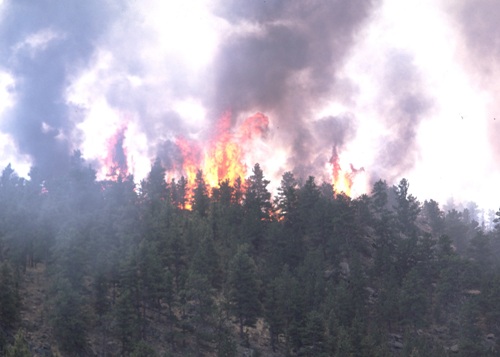Adapted from: Rogstad, Alix; Crimmins, Michael; and Garfin, Gregg. 2006. Climate change and wildfire impacts in Southwest forests and woodlands. University of Arizona College of Agriculture and Life Sciences. Publication No. az1425
Wildfire requires three things to burn: an ignition source, fuel, and oxygen. If one of the three requirements is removed, the fire activity will be limited or nonexistent. Similarly, once a fire has started to burn, its behavior is determined by three factors: fuel (type, quantity, moisture level), topography (slope and aspect), and weather (wind, humidity, and temperature). The specific weather conditions during a fire event greatly influence how the fire burns. It follows that long-term climate variability can influence fire behavior by affecting site-specific fuel conditions (e.g., fuel moisture, type, and arrangement).
Adapted by Tom DeGomez, University of Arizona
Related to Wildfire and Climate:
- Climate and Disturbance
- Wildfire and Forest Health
- Reduce Greenhouse Gas Emissions in Forest Management
- You Can Save Your Home from a Wildfire
In Wildfire and Climate:
- Fuel Accumulation and Fire Intensity
- Climate Change and Wildfire in Southwestern Forests
- Forest Restoration Alternatives for Wildfire Management
- Changes in Southwestern Forests

